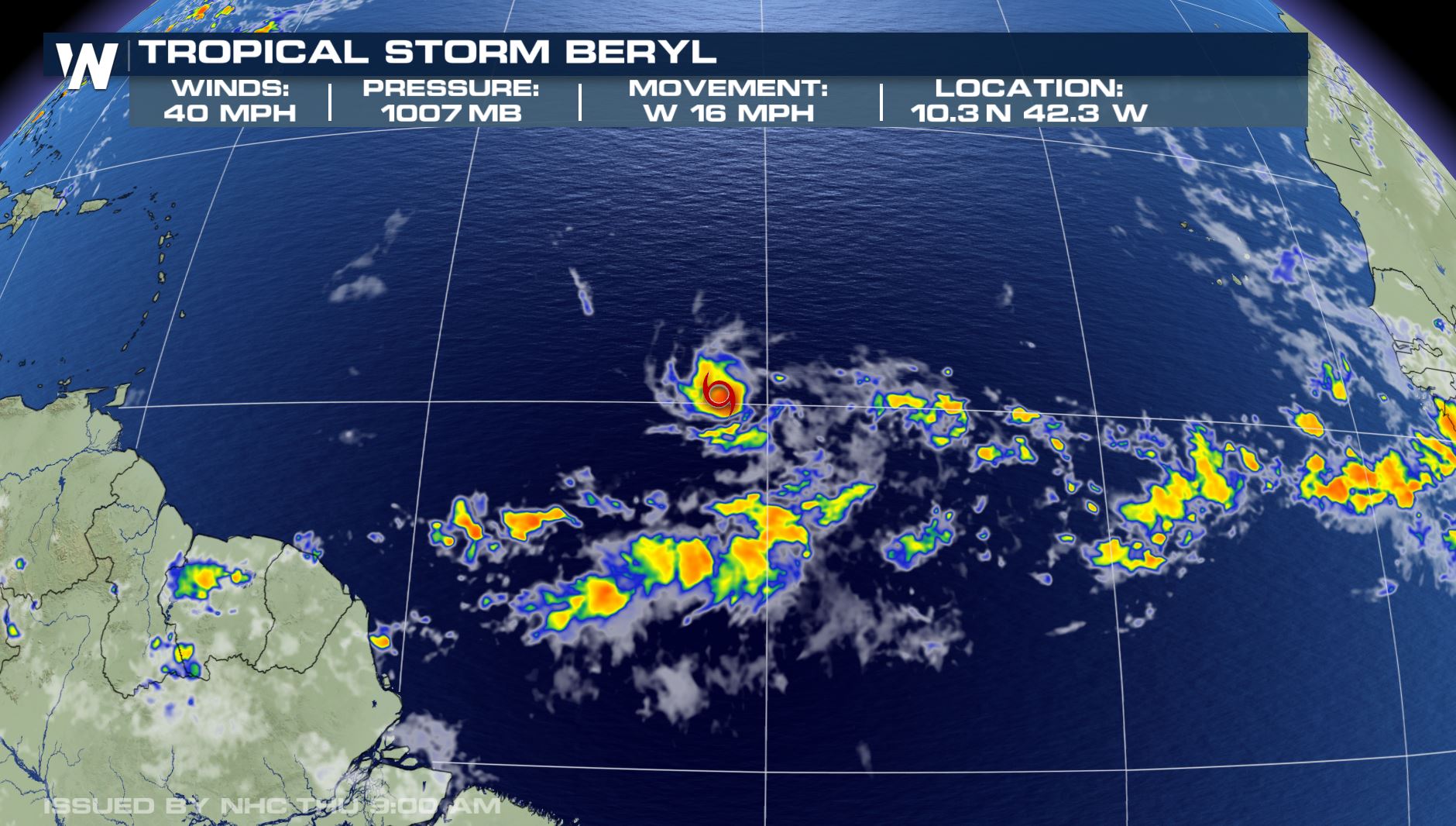Storm Beryl’s Formation and Development: Storm Beryl Path
Storm beryl path – Storm Beryl originated from a tropical wave that emerged off the coast of Africa on July 5, 2018. The wave moved westward, gradually organizing as it traversed the Atlantic Ocean. Favorable atmospheric conditions, including warm sea surface temperatures and low wind shear, fostered the development of the wave into a tropical depression on July 9th.
Initial Development and Movement
As the depression continued westward, it intensified into Tropical Storm Beryl on July 10th. The storm’s initial path took it towards the Lesser Antilles, where it passed south of Barbados and St. Lucia, bringing heavy rainfall and gusty winds to the islands.
Storm Beryl continues its path towards the Lesser Antilles, bringing heavy rainfall and possible flooding. While the exact track of the storm is still uncertain, it is expected to pass near Barbados. For more information on hurricane preparedness in Barbados, please visit barbados hurricane.
As Storm Beryl approaches, residents are advised to stay informed and take necessary precautions.
Strengthening and Recurvature
Upon entering the Caribbean Sea, Beryl encountered more favorable conditions and rapidly strengthened. It attained hurricane status on July 12th, becoming the first hurricane of the 2018 Atlantic hurricane season. The storm then turned northwest, skirting the coast of Puerto Rico and passing just north of the Dominican Republic.
Storm Beryl meandering across the Atlantic, expected to strengthen into a hurricane. Hurricane Beryl Florida residents should monitor its path closely. Beryl’s unpredictable trajectory makes it difficult to pinpoint its exact landfall, but it could impact the Sunshine State. Stay tuned for updates on Storm Beryl’s path and potential impacts.
Weakening and Dissipation
As Beryl approached the Bahamas, it began to weaken due to cooler sea surface temperatures and increased wind shear. The storm made landfall on Grand Bahama Island as a tropical storm on July 13th, bringing heavy rainfall and flooding to the island. Beryl continued to weaken as it moved across Florida, eventually dissipating over the southeastern United States on July 15th.
Storm Beryl’s Impact and Aftermath

Storm Beryl brought destructive winds, heavy rainfall, and flooding to several areas, causing significant damage and disruption. The storm’s impact was felt across multiple states, leaving behind a trail of devastation.
Infrastructure was severely affected by the storm, with power outages affecting thousands of homes and businesses. Roads and bridges were damaged or destroyed, hampering transportation and emergency response efforts. Communication systems were also disrupted, making it difficult for residents to stay informed and connected.
Property Damage
Storm Beryl caused extensive damage to property, including homes, businesses, and other structures. High winds ripped off roofs and shattered windows, while floodwaters inundated homes and businesses, causing severe damage to interiors and belongings.
Environmental Impact
The storm also had a significant impact on the environment. Heavy rainfall led to flooding, which washed away topsoil and eroded riverbanks. Coastal areas were battered by strong winds and storm surges, causing beach erosion and damage to marine ecosystems.
Response and Recovery
In the aftermath of the storm, emergency responders worked tirelessly to provide assistance to affected areas. Search and rescue operations were conducted to locate and evacuate stranded individuals. Power crews worked to restore electricity, while transportation crews repaired damaged roads and bridges.
Recovery efforts focused on providing shelter, food, and medical care to those in need. Local and state governments, as well as volunteer organizations, played a vital role in distributing aid and supporting affected communities.
Forecasting and Tracking Storm Beryl

Forecasting and tracking Storm Beryl’s movement and intensity involved a combination of meteorological observations, numerical weather prediction models, and satellite imagery. Meteorologists used these tools to estimate the storm’s path, speed, and potential impacts.
Accuracy of Forecasts and Challenges, Storm beryl path
The accuracy of the forecasts for Storm Beryl varied depending on the lead time. Short-term forecasts (up to 3 days) were generally more accurate, while long-term forecasts (beyond 5 days) had greater uncertainty. Challenges in predicting the storm’s path included:
- Unpredictable changes in wind patterns
- Interaction with other weather systems
- Errors in numerical weather prediction models
Importance of Timely and Accurate Forecasting
Timely and accurate forecasting is crucial for disaster preparedness and response. It allows emergency managers to issue early warnings, evacuate vulnerable areas, and allocate resources effectively. Accurate forecasts can help minimize damage and loss of life by giving communities time to prepare.
